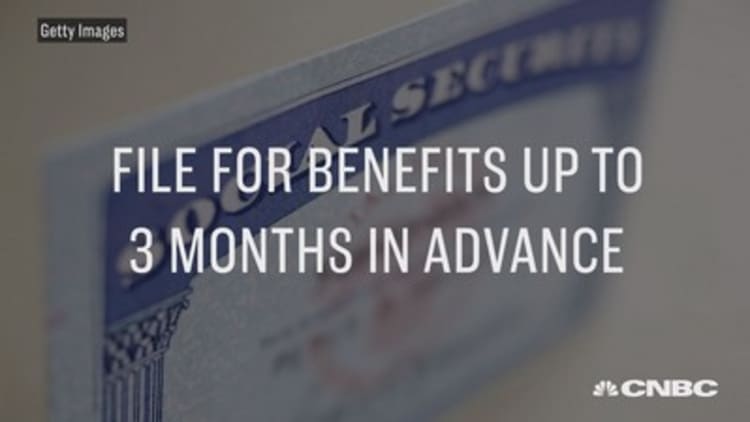If you feel like your Social Security check doesn't stretch as far as it once did, there's a likely explanation for it.
Since 2000, the buying power of monthly benefits has fallen by more than a third, according to an annual report released Thursday by the Senior Citizens League, an advocacy group based in Alexandria, Virginia.
In other words, the cost of goods and services common among retirees have collectively risen faster than the cost-of-living adjustment, or COLA, that Social Security recipients get every year.
"People who recently retired might have seen only a [small] decrease in buying power," said Mary Johnson, a policy analyst for the league. "But those retired for a long time are feeling the cumulative effect of this."
About 47 million older Americans receive Social Security. Overall, the benefits comprise about a third of income among those age 65 or older, according to the Social Security Administration.
The league's annual report examines the costs that typically comprise household budgets of older Americans and compares their price change with annual COLAs. Based on those comparisons, the research found a 4 percent loss in Social Security buying power from January 2017 to January 2018 and a 34 percent decrease since 2000.
While COLA increases since 2000 cumulatively have equaled 46 percent — matching inflation over those years — typical retiree expenses grew by 96.3 percent, the study shows. Of the 39 costs analyzed in the report, 26 grew faster than the percentage increase in COLAs from 2000 to 2018.
Top six fastest-growing retiree costs
| Item | Cost in 2000 | Cost in 2018 | Increase |
|---|---|---|---|
| Medicare Part B monthly premium | $45.50 | $134 | 195% |
| Prescription drugs annual out-of-pocket | $1,102 | $3,172.72 | 188% |
| Home heating oil (gallon) | $1.15 | $3.22 | 181% |
| Medigap | $119 | $306.64 | 158% |
| Propane gas (gallon) | $1.01 | $2.60 | 157% |
| Real estate taxes | $690 | $1,579.06 | 129% |
Source: Source: Senior Citizens League
Housing and medical outlays top the list of fastest-growing expenses that retirees face. For example, average Medicare Part B premiums have risen 195 percent to $134 from $45.50 in 2000.
"It's not a pretty picture," Johnson said. "It's difficult when costs are increasing so much more quickly than COLAs."
Johnson said the report uses 2000 as a baseline because that's when changes to how inflation is measured were fully implemented. Social Security COLAs are based on that measurement, called the Consumer Price Index for Urban Wage Earners and Clerical Workers.

Critics say that formula fails to consider the different spending patterns for retirees compared with the U.S. population at large. Johnson's group is among those that advocate for a different index — the Consumer Price Index for the Elderly — to be used to determine Social Security COLAs.
Since 2010, the average COLA has been 1.2 percent. Most recently, there was no COLA in 2016, followed by a 0.3 percent boost in 2017. While 2018 brought a 2 percent increase, many retirees saw the extra money go toward their Medicare Part B premium.
Johnson estimates that the COLA for 2019 will be at least 3.3 percent, which could help mute some of the loss of buying power year over year.
More from Personal Finance:
This investment fee tax break is gone. Here's what it means for your IRA
Older Americans planning to downsize should brace for sticker shock
This threat could devour thousands of dollars from your estate


